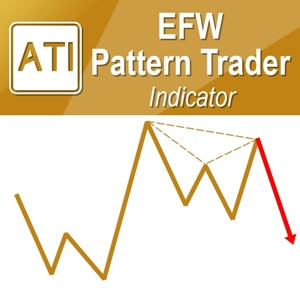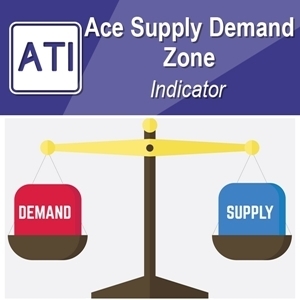Technical Indicator for Forex and Stock Market Trader
Technical indicators are tools used by the day traders to analyze past price movements, predict future price movements, and identify potential trading opportunities in Forex and Stock markets. These technical indicators are based on mathematical calculations applied to price, volume, or open interest data. They help traders make informed decisions about when to buy or sell securities. Here are some commonly used but free technical indicators for the day trading:
- Moving Averages (MA): Moving averages smooth out price data to create a single flowing line. They help identify trends by filtering out noise from random price fluctuations. Common types include simple moving averages (SMA) and exponential moving averages (EMA).
- Relative Strength Index (RSI): The RSI measures the speed and change of price movements. It oscillates between 0 and 100 and is used to identify overbought or oversold conditions in a market. A reading above 70 typically indicates overbought conditions, while a reading below 30 indicates oversold conditions.
- Moving Average Convergence Divergence (MACD): MACD is a trend-following momentum indicator that shows the relationship between two moving averages of a security’s price. It consists of a MACD line (the difference between two exponential moving averages) and a signal line (a moving average of the MACD line). Traders look for crossovers between the MACD line and the signal line to identify potential buy or sell signals.
- Bollinger Bands: Bollinger Bands consist of a middle band (a simple moving average) and two outer bands (standard deviations away from the middle band). They expand and contract based on volatility. Traders use Bollinger Bands to identify overbought or oversold conditions and potential trend reversals.
- Stochastic Oscillator: The stochastic oscillator compares a security’s closing price to its price range over a specific period. It oscillates between 0 and 100 and is used to identify overbought or oversold conditions. Traders look for crossovers between the %K and %D lines, as well as divergences between the oscillator and price, to identify potential buy or sell signals.
- Volume: Volume is the number of shares or contracts traded in a security during a given period. High volume often accompanies significant price movements, indicating strong market interest. Traders use volume to confirm the strength of a trend or identify potential trend reversals.
- Average True Range (ATR): ATR measures market volatility by calculating the average range between the high and low prices over a specified period. Traders use ATR to set stop-loss levels and determine the size of their positions based on market volatility.
It’s important for day traders to understand the strengths and limitations of each technical indicator and to use them in conjunction with other forms of analysis, such as fundamental analysis and market sentiment, to make well-informed trading decisions. Additionally, traders should test different indicators and trading strategies in simulated environments before implementing them in live trading.
If you are a Forex or Stock market trader, then how can we make the trading decision to buy or sell a particular asset like a currency or stock at your interest. You will need the Technical analysis or fundamental analysis to fullfill your decision making goal. Technical and fundamental analyses are the two main schools of thoughts for financial trading and investment. Technical analysis assumes that price discounts for everything. For example, technical analyst believe that at a given time a stock’s price reflects everything that could affect the company including company’s fundamental factors, economic factors and market psychological factors. Technical analyst also believes that history tends to repeat itself. Therefore, they can predict the future. Technical analysis only leaves the price as the main subject to study. For fundamental analysis, traders study the intrinsic value of the company. For example, they make their trading decision based on growth potential of the security. They are more concerned with basis like sales, earnings and management of the company. In general, fundamental traders are considered as the long term investors whereas the technical traders are considered as the short term investors. However, there are short-term fundamental traders too. For example, some news traders do not hold their position too long. On the other hands, there are technical traders basing their trading decision on monthly timeframe. Those technical traders can hold their position for several months to few years too.
The origin of technical analysis could be traced back to the trading of Japanese rice in Osaka in late 1600. This is the period when the Japanese candlestick technique was developed. With the development of high capacity computers and internet, the development of technical analysis has been accelerated even fast. In this book, we are only interested in the technical analysis in terms of the methodological point of view. Do not confuse the technical analysis with technical indicators. Technical analysis is the comprehensive methodology that covers broad scientific and mathematical methods. Technical indicator is the mathematical transformation of the price series to extract smoothed price trajectory or oscillating motion of the price like Simple Moving average or Relative Strength Index. Of course, technical indicator is a part of technical analysis but it is much smaller concept comparing to technical analysis. To give you some ideas about technical analysis, we will present five important categories for technical analysis. The five categories include charting, pattern analysis, technical indicator, mathematical method and artificial intelligence.
Algotrading-Investment.com is the Technical Indicator shop for Forex and Stock Market Trader. We provide the Technical Analysis Solution and Technical Indicators in MetaTrader 4 and MetaTrader 5 for Forex and Stock Trader. These MetaTrader tools we provide are the solution designed to solve the puzzle of the Market geometry in Forex market beyond your technical indicators. The links below are the list of our premium and advanced products for MetaTrader.
1. Fractal Pattern Scanner
Fractal Pattern Scanner is a market prediction indicator to predict turning point and cycle, which can provide both breakout and reversal trading opportunity. Fractal Pattern Scanner uses fractal geometry for market prediction. Fractal Pattern Scanner is the prediction Indicator that brings the latest trading technology after the extensive research and development with the fractal geometry in the financial market.
YouTube Link: https://youtu.be/QGHvKjECX1U
YouTube Link: https://youtu.be/_bstJrIevSQ
Landing Page to Fractal Pattern Scanner
https://www.mql5.com/en/market/product/49170
https://www.mql5.com/en/market/product/49169
2. Chart Pattern Scanner (MT4/MT5 available)
Chart Pattern MT is a chart pattern scanner to detect the triangle pattern, falling wedge pattern, rising wedge pattern, channel pattern and so on. Chart Pattern MT uses highly sophisticated chart pattern detection algorithm. However, we have designed it in the easy to use with intuitive user interface.
Youtube link: https://www.youtube.com/watch?v=A1-IUr6u5Tg
https://www.mql5.com/en/market/product/84567
https://www.mql5.com/en/market/product/84568
3. Elliott Wave Trend (MT4/MT5 available)
Elliott Wave Trend was designed for the scientific wave counting. This tool focuses to get rid of the vagueness of the classic Elliott Wave Counting using the guideline from the template and pattern approach. In doing so, firstly Elliott Wave Trend offers the template for your wave counting. Secondly, it offers Wave Structural Score to assist to identify accurate wave formation. It offers both impulse wave Structural Score and corrective wave Structure Score. Structural Score is the rating to show how good your Elliott Wave pattern is. 100% means that it is good wave pattern. The score below 80% or negative values means that you might have some mistakes in your analysis.
Youtube link: https://www.youtube.com/watch?v=Oftml-JKyKM
https://www.mql5.com/en/market/product/16479
https://www.mql5.com/en/market/product/16472
4. X3 Chart Pattern Scanner (MT4/MT5 available)
X3 Chart Pattern Scanner is not entirely Elliott Wave tool as you can trade with Harmonic Pattern, X3 Chart Pattern and Elliott Wave pattern. The good thing is that the pattern detection process in X3 Chart Pattern Scanner is fully automatic. This is probably convenient feature for many day traders who want to manage their trading and risk efficiently. In addition, you can adjust and modify the detectable chart patterns from the input page of X3 Chart Pattern Scanner.
Youtube: https://www.youtube.com/watch?v=uMlmMquefGQ
https://www.mql5.com/en/market/product/41993
https://www.mql5.com/en/market/product/41992
5. Price Breakout Pattern Scanner (MT4/MT5 available)
Price breakout pattern scanner is the repainting chart pattern scanner. Price breakout pattern scanner can detect following patterns automatically. In addition, price breakout pattern scanner provide the renko chart to improve your market prediction with these price patterns.
Youtube: https://www.youtube.com/watch?v=aKeSmi_Di2s
https://www.mql5.com/en/market/product/4859
https://www.mql5.com/en/market/product/4858
6. Harmonic Pattern Plus (MT4/MT5 available)
Harmonic pattern plus is extremely good product for the price. With dozens of powerful features including Pattern Completion Interval, Potential Reversal Zone, Potential Continuation Zone, Automatic Stop loss and take profit sizing. This is type 1 harmonic pattern indicator.
YouTube link: https://www.youtube.com/watch?v=CzYUwk5qeCk
https://www.mql5.com/en/market/product/4488
Related Products







